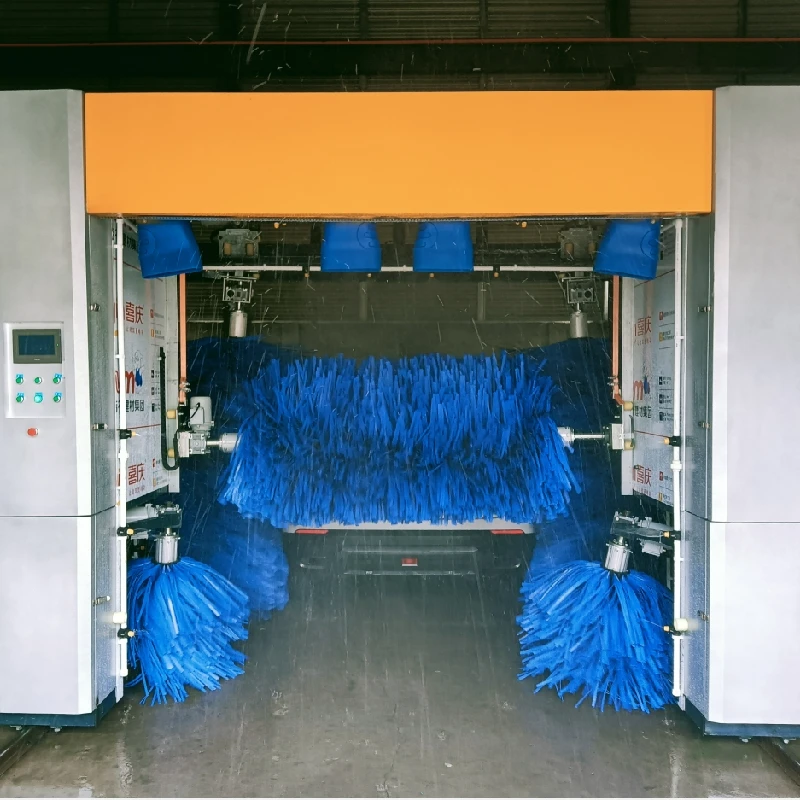2 月 . 12, 2025 13:27
Back to list
DY-QC-9 Tunnel car washing machine
Designing an efficient car wash tunnel layout is crucial for any business looking to optimize operations, delight customers, and increase profitability. This article delves into the intricacies of planning such layouts, focusing on the blend of experience, expertise, authoritativeness, and trustworthiness required to make an impact in the competitive car wash industry.
Integrating tried-and-tested design philosophies also underscores the layout’s professionalism and reliability. The lean manufacturing principles, notably employed in automotive assembly lines, minimize waste by emphasizing efficiency and continuous improvement. These principles, when adapted to a car wash tunnel, advocate for incremental layout adjustments based on performance metrics and customer feedback. Such a proactive approach not only minimizes downtime but also reflects a commitment to quality service. To ensure the layout’s success and sustainability, continuous training for staff remains indispensable. Experienced personnel can manage equipment more effectively, troubleshoot potential issues quicker, and maintain an atmosphere of efficiency and safety. A trusted business also invests in its workforce by providing certification courses that enhance their technical and customer service skills, adding a human layer to the mechanized process. Regular maintenance remains another pillar supporting trustworthiness and operational reliability. Routine checks on all equipment prevent unforeseen breakdowns and costly repairs. A preventative maintenance schedule developed in consultation with equipment manufacturers ensures each machine operates within optimal conditions, safeguarding both the vehicle and the business’s reputation. Finally, sustainability is an integral component of modern car wash tunnel layouts. Utilizing water reclaim systems reduces consumption and operating costs, appealing to environmentally conscious consumers and enhancing the business’s image. Energy-efficient LED lighting and solar panels cater to the growing demand for sustainable business practices while offering potential tax incentives and a reduced carbon footprint. In conclusion, designing a compelling car wash tunnel layout goes beyond placing machinery in a row. A successful design blends space optimization, precise equipment selection, enhanced customer flow, ongoing staff training, regular maintenance, and sustainability considerations. By focusing on these elements with an eye for experience, expertise, authoritativeness, and trustworthiness, business owners can create a car wash tunnel layout that stands out in an ever-evolving market.


Integrating tried-and-tested design philosophies also underscores the layout’s professionalism and reliability. The lean manufacturing principles, notably employed in automotive assembly lines, minimize waste by emphasizing efficiency and continuous improvement. These principles, when adapted to a car wash tunnel, advocate for incremental layout adjustments based on performance metrics and customer feedback. Such a proactive approach not only minimizes downtime but also reflects a commitment to quality service. To ensure the layout’s success and sustainability, continuous training for staff remains indispensable. Experienced personnel can manage equipment more effectively, troubleshoot potential issues quicker, and maintain an atmosphere of efficiency and safety. A trusted business also invests in its workforce by providing certification courses that enhance their technical and customer service skills, adding a human layer to the mechanized process. Regular maintenance remains another pillar supporting trustworthiness and operational reliability. Routine checks on all equipment prevent unforeseen breakdowns and costly repairs. A preventative maintenance schedule developed in consultation with equipment manufacturers ensures each machine operates within optimal conditions, safeguarding both the vehicle and the business’s reputation. Finally, sustainability is an integral component of modern car wash tunnel layouts. Utilizing water reclaim systems reduces consumption and operating costs, appealing to environmentally conscious consumers and enhancing the business’s image. Energy-efficient LED lighting and solar panels cater to the growing demand for sustainable business practices while offering potential tax incentives and a reduced carbon footprint. In conclusion, designing a compelling car wash tunnel layout goes beyond placing machinery in a row. A successful design blends space optimization, precise equipment selection, enhanced customer flow, ongoing staff training, regular maintenance, and sustainability considerations. By focusing on these elements with an eye for experience, expertise, authoritativeness, and trustworthiness, business owners can create a car wash tunnel layout that stands out in an ever-evolving market.
Related PRODUCTS




